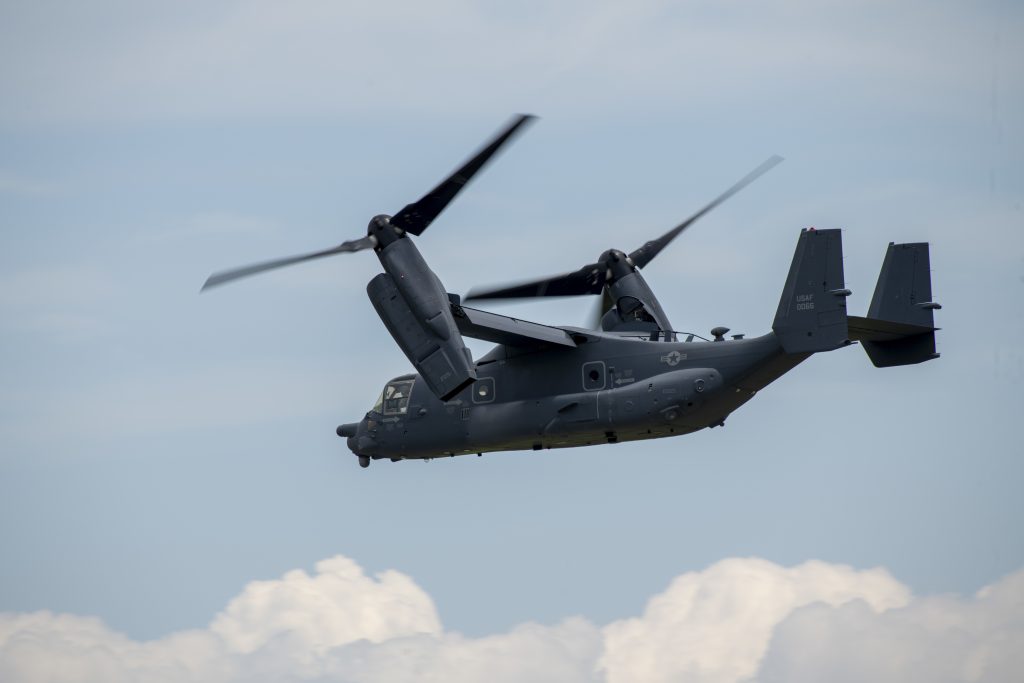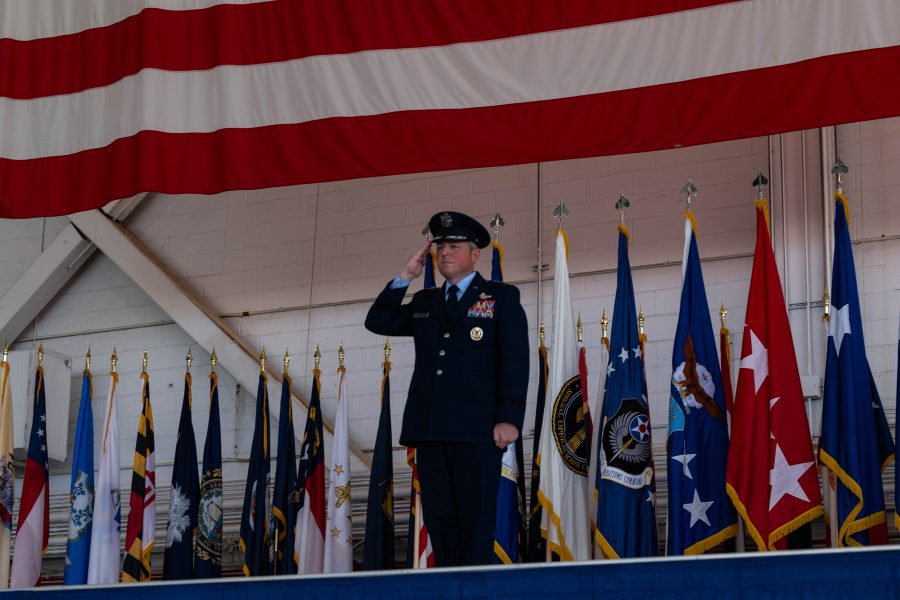Lt. Gen. Michael Conley succeeded Lt. Gen. Tony D. Bauernfeind as the head of Air Force Special Operations Command in a ceremony at Hurlburt Field, Fla., on July 2, while halfway around the world, an AFSOC CV-22 Osprey took flight at Yokota Air Base, Japan, for the first time since last November.
Conley, a career CV-22 pilot, is making a two-grade jump, from brigadier to lieutenant general. Among his challenges will be to keep the valuable Ospreys flying.
At Hurlburt, Bauernfeind, Air Force Chief of Staff Gen. David W. Allvin, and the commander of U.S. Special Operations Command, Gen. Bryan Fenton, all acknowledged that the recent past has been “the most challenging of times,” following the fatal crash of Gundam 22 off the coast of Japan last November. The crash killed all eight Air Commandos aboard, making it the deadliest Air Force mishap in five years. The Air Force grounded its Ospreys after that. In May, AFSOC was shaken further when Senior Airman Roger Fortson was killed by a sheriff’s deputy in Florida, who had come to the wrong door in response to a complaint. The shooting unleashed outrage and grief throughout the Air Force community.
Baurenfeind, meanwhile, was guiding AFSOC through a transition after decades of asymmetric warfare in the Middle East as the command adjusts to today’s era of great power competition with China and Russia.
Allvin made clear that such a transition is not a black-and-white shift. “In this business, we don’t have the luxury of doing ‘or,’” he said. “We can’t help the unit heal or continue the mission,” Allvin said, praising Bauernfeind for his “engaged leadership” through the multiple crises and their fallout.
Bauernfeind noted the importance of community and how Airmen rallied together in the wake of the crash and Fortson’s killing.
“We’ve got to keep improving the conditions for our families, so that our Air Commandos continue to serve and continue to go forward to take the fight against our adversaries,” Bauernfeind said. “And I especially appreciate what you did in crisis.”
AFSOC must now continue to fulfil its role in Special Operations Command’s push to reinvent itself.
Fenton credited the command with pioneering new technologies and concepts for communications, counter-drone weapons, and “air drop insertion of unmanned systems,” while Allvin noted that “it’s no mistake that many of the things we’re pursuing are being birthed right here at AFSOC.”
One of those “things” is the “Power Projection Wings” that AFSOC is building, which combine different systems and capabilities from across the command.
“Transforming to Power Projection Wings so that every theater special operations command and air component command has access to every AFSOC capability is groundbreaking and is going to be the basis of our future Deployable Combat Wings,” Bauernfeind said.
Allvin also noted the command’s role under Bauernfeind in contributing to Air Task Forces, the forerunner to Combat Deployable Wings, and Agile Combat Employment, the idea of creating small teams of Airmen that can move quickly and operate from remote or austere locations—much like Air Commandos can do.
Work on these changes will now continue under Conley, who was Bauernfeind’s director of operations and will now go straight to the top of the command.
“He’s ready,” Allvin said. “He has not only proved his qualifications, but also his currency. … His leadership qualities have been demonstrated over and over again in the squadrons and wings throughout AFSOC throughout his career. Unblemished records, fantastic personal accounts of his leadership. He also possesses the breadth. The assignments he’s held give him a larger perspective.”
Conley previously commanded at the group and squadron level, and has worked at both Air Mobility Command and U.S. Space Command. Conley’s “leadership qualities have been demonstrated over and over again in the squadrons and wings throughout AFSOC throughout his career,” Allvin said, citing his “unblemished records, fantastic personal accounts of his leadership” and the breadth of his assignments as all contributing to “give him a larger perspective.”
The incoming commander kept his own comments to a minimum. Conley thanked family, friends, and teammates, then focused on the mission ahead. “We must remain ready to fight tonight, just like our teammates that are currently in the fight down range,” he said, “but also adapt and prepare for future battles and future battlespaces.”
For Conley, the gradual return to full flight operations for the Osprey will be a major initial focus.

Ospreys Fly at Yokota
The start of Osprey flight operations at Yokota on July 2 comes nearly eight months after the Gundam 22 crash, and leaders emphasized the meticulous approach taken to get there, with additional safety measures in place.
“We remain steadfast in our commitment to ensuring the safety of the men and women who operate our aircraft and the safety of our community both on base and in Japan,” 21st Special Operations Squadron commander Lt. Col. Matthew Davis said in a statement. “These safety mitigation measures have been taken seriously, and we would not fly this aircraft without full confidence in the measures, the maintenance professionals implementing them, and the skilled professionals who fly it.”
Yet even with its return to flight, the CV-22 is not yet out of the dark. Defense Department officials said last month that the V-22 will continue to fly under restrictions until mid-2025. In the meantime, Osprey pilots and crews who haven’t been airborne in months must regain their currency and familiarity, while learning new flight protocols to avoid further incidents.
